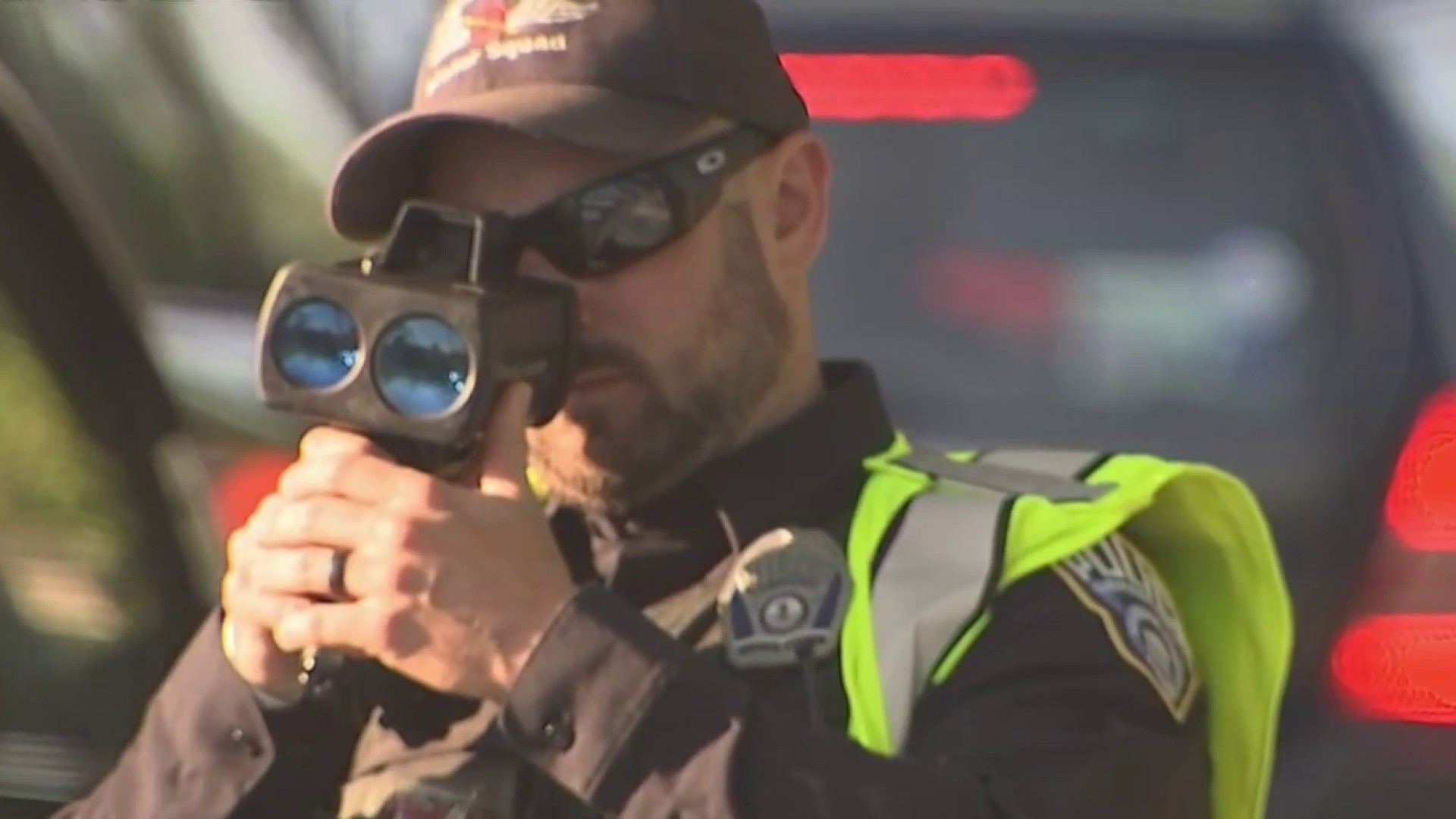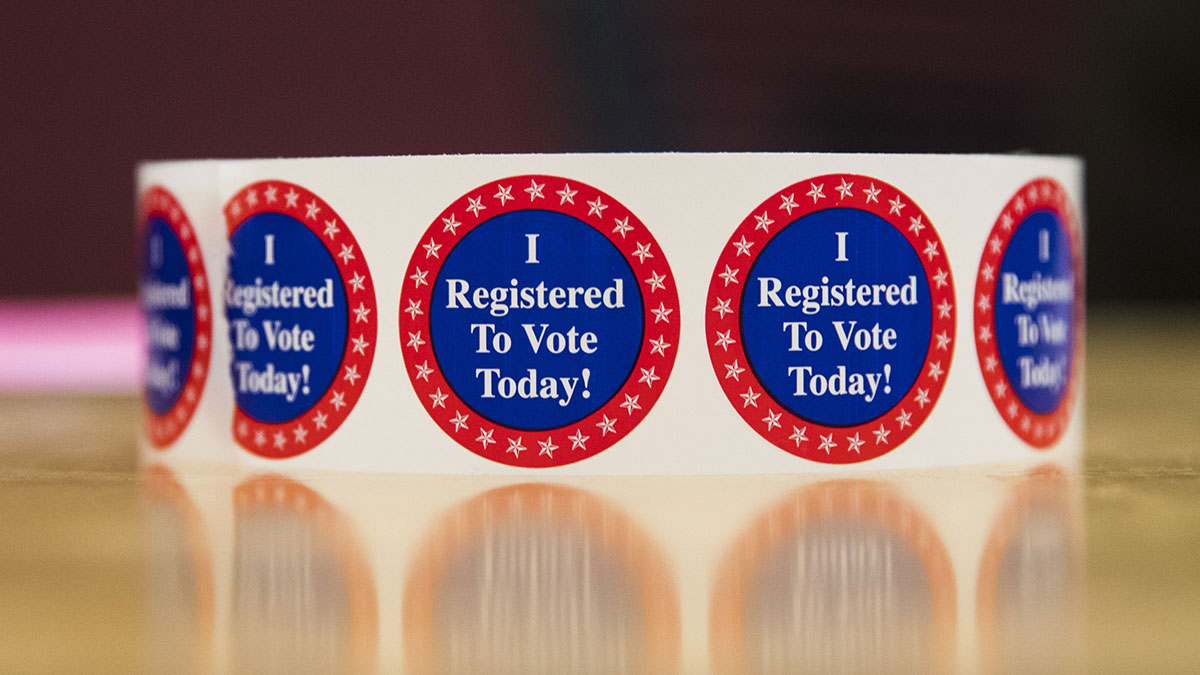The worst air quality in at least two decades has gripped the Washington, D.C., area, and it's putting people at higher risk on Thursday. If you're feeling the impacts on your nose, throat or sinuses, you're not alone: tens of millions of people are under air quality alerts in the United States.
Wildfires in Canada have been sending smoke down into the northeastern United States, and starting Wednesday, that smoke led to dangerous air quality ratings in the D.C. area.
By Thursday morning, air quality declined to code maroon, which is "hazardous," in the Washington, D.C. region, according to the Metropolitan Washington Council of Governments (MWCOG). The Air Quality Index was 313 at 8 a.m.; the code maroon range includes anything above 300.
Go here for more updates on Thursday's air quality alert, cancelations and impacts.
We're making it easier for you to find stories that matter with our new newsletter — The 4Front. Sign up here and get news that is important for you to your inbox.
"Everyone should stay indoors and reduce activity levels," the federal government's AirNow website said.
An overall code purple alert is expected for Thursday, according to AirNow. Code purple is still "very unhealthy" for everyone, meaning vulnerable groups should avoid physical activities outdoors and everyone should limit exposure or strenuous outdoor activities.
Local
Washington, D.C., Maryland and Virginia local news, events and information
Different areas should expect different air quality ratings, and they may fluctuate throughout the day. You can enter your zip code into the AirNow website, or check the map.
Public schools canceled outdoor activities; the National Zoo shut down on Thursday and the FAA warned of potential flight delays as the air quality worsened.
Christopher Rodriguez, D.C.’s Director of the Homeland Security and Emergency Management Agency, said people should stay inside as much as possible.
“And if you do have to go out and engage in outdoor activities, make sure you wear a [KN95] or N95 mask while you’re out there,” Rodriguez said.
Air quality is expected to be at its worst around D.C. and north, toward Philadelphia. Areas farther south can expect somewhat better air quality.
The region's air quality is expected to improve by the weekend, Rodriguez said.
The Washington Monument, usually visible from Reagan National Airport, was almost completely obscured by the smoke on Wednesday and Thursday.
"You can taste the air," one runner in D.C. said Wednesday morning.
Here's what to know.
The culprit: Canadian wildfires
There are more than 400 active wildfires burning in different Canadian provinces and territories as of Wednesday morning, and roughly 26,000 people were under evacuation orders on Tuesday.
Those wildfires had already burned more than 8.5 million acres in Canada on Tuesday, when smoke from fires burning in Quebec drifted into the U.S. and caused hazy skies and smoky conditions.
New York saw the worst air quality in the world on Wednesday. All five boroughs of New York City reached conditions considered unhealthy for everyone, not just those vulnerable to respiratory conditions.
Air quality advisories were in effect in the Mid-Atlantic region, North Carolina and Indiana on Thursday as the wildfire smoke traveled south. Southeastern Minnesota, parts of the Upper Peninsula of Michigan and areas in Wisconsin, plus most of New England were under alerts on Wednesday.
Much of the D.C. area was registering code orange air quality levels on Tuesday afternoon, meaning the level of pollution in the air was high enough to create conditions unhealthy for anyone sensitive to poor air quality, or vulnerable to respiratory conditions.
Air quality deteriorated to code red for the D.C. area by early Wednesday, before hitting the worst level.
What do air quality codes mean?
The Environmental Protection Agency monitors how polluted or clear the air is with the Air Quality Index, or AQI. The scale runs from 0 to 500, and the higher the AQI, the more pollution there is in the air.
Each range on the AQI is given a color. Green is the zero to 50 part of the range, and qualifies as "Good" air quality; yellow is 51 to 100, and qualifies as "Moderate" air.
Code orange is the part of the range from 101 to 150, and means the air is unhealthy for sensitive groups. A code red, which ranges from 151 to 200, is unhealthy for everyone.
Code purple means everyone is at risk of health impacts. Once you get to 301 and higher, people are more likely to be sickened.
See the chart below for the full range of the AQI.
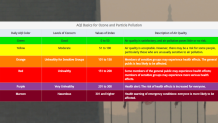
Wildfires release a lot of pollution into the atmosphere. The fine particulate matter in the smoke is especially bad for human lungs, and can cause decreased lung function, throat irritation and shortness of breath, according to the EPA. It can also cause bronchitis and asthma, according to CNBC.
According to research from Stanford University, being "exposed to wildfire smoke causing AQI of 150 for several days is equivalent to about seven cigarettes a day if someone were outside the whole time."
Air quality measurements can differ from state to state and county to county, and over time throughout the day.
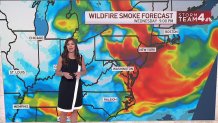
Is poor air quality rare in DC?
The D.C. Metro area typically sees about 10 or fewer code orange days every year.
But the region has not seen a code red air quality day, excluding fireworks, since February 19, 2011, Storm Team4 Meteorologist Amelia Draper said Wednesday morning.
That makes Wednesday's hazy, hazardous conditions very rare.
But as of June 7, 2023, DC has already seen seven poor air quality days. And on Wednesday morning, Environment Canada said they expect fire season in the country to continue to run well above normal across most of Canada through at least September.
"I think this is going to be a common topic for us here this summer, of our poor air quality, at least our hazy skies," Draper said Wednesday.
Where was the air quality worst on Wednesday?
Areas like Frederick, Maryland, as well as northwestern Montgomery, Howard and Carroll counties were under a code red air quality alert all day long.
The most unhealthy air, that was seen in New York on Tuesday, also sagged south into the D.C. Metro area on Wednesday morning.
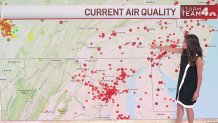
AirNow.gov showed the air quality around 11 a.m. as code red for residents of D.C., Maryland and Virginia, with very unhealthy code purple air quality in Lancaster, Maryland and in Franconia, Virginia.
A number of schools in the D.C. area canceled outdoor activities including recess and sports practices. D.C. Public Schools canceled all outdoor activities for Wednesday.
Fairfax County Public Schools canceled outdoor activities until 6 p.m. And Montgomery County Public Schools canceled these activities for Wednesday as well as Thursday.
When will the smoke go away in DC?
Poor air quality will likely last through at least Friday, Draper said, with Thursday still bringing hazy skies to those in Maryland, D.C. and Virginia.
Possible storms on Friday afternoon and evening could improve the air quality and make it easier to breathe, but the exact timing depends on the direction of the wind, the severity of the wildfires in Canada, and how much rain we get in the D.C. area.
The best chance for rain is Monday, meaning the poor air quality could last through the weekend.
The smoky haze should decrease into next week regardless of when rain arrives.
How can I stay safe from the smoke in DC?
The best way to protect yourself from the negative health effects of wildfire smoke is to avoid breathing it in -- which means staying inside as much as possible.
If you typically work out outside, Wednesday and Thursday are good days to hit the gym instead. It's also not a good day to bring your kids out to the park or the pool, especially if they have allergies, asthma, or chronic health issues.
Pets should also stay inside when the air is unhealthy.
“Other mammals, they suffer from many of the same lung conditions that humans do,” Dr. Purvi Parikh, an allergist and immunologist at the Allergy & Asthma Network, told NBC News on Wednesday.
It's also a good idea to use the "recirculate" air button in your car, Storm Team4 Meteorologist Chuck Bell said.
"This keeps the outside air OUT and keeps sending the inside air through the filters," he said.
If you need extra protection from smoky conditions, the Centers for Disease Control recommends finding a room you can seal off from outside air. Consider a portable air cleaner or a filter to keep that room clean.
There are ways to create an air filter yourself using a box fan and furnace filters you can purchase at most grocery stores.
Respirators, like N95s, can help reduce your smoke exposure if you have to be outside in poor air quality conditions, according to the CDC.
Sign up for our Breaking newsletter to get the most urgent news stories in your inbox.

